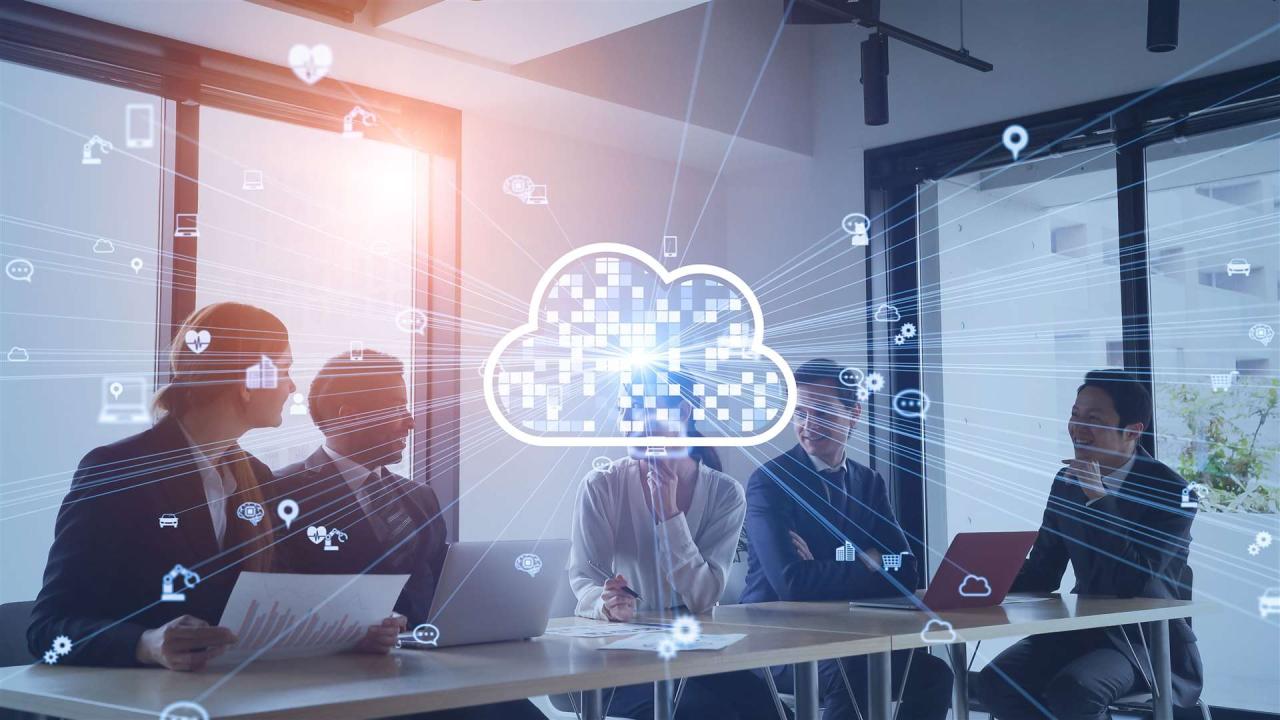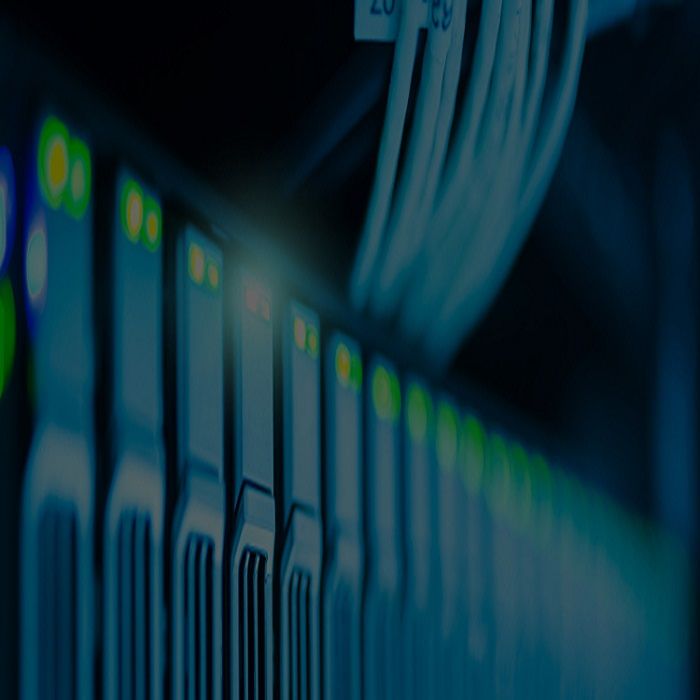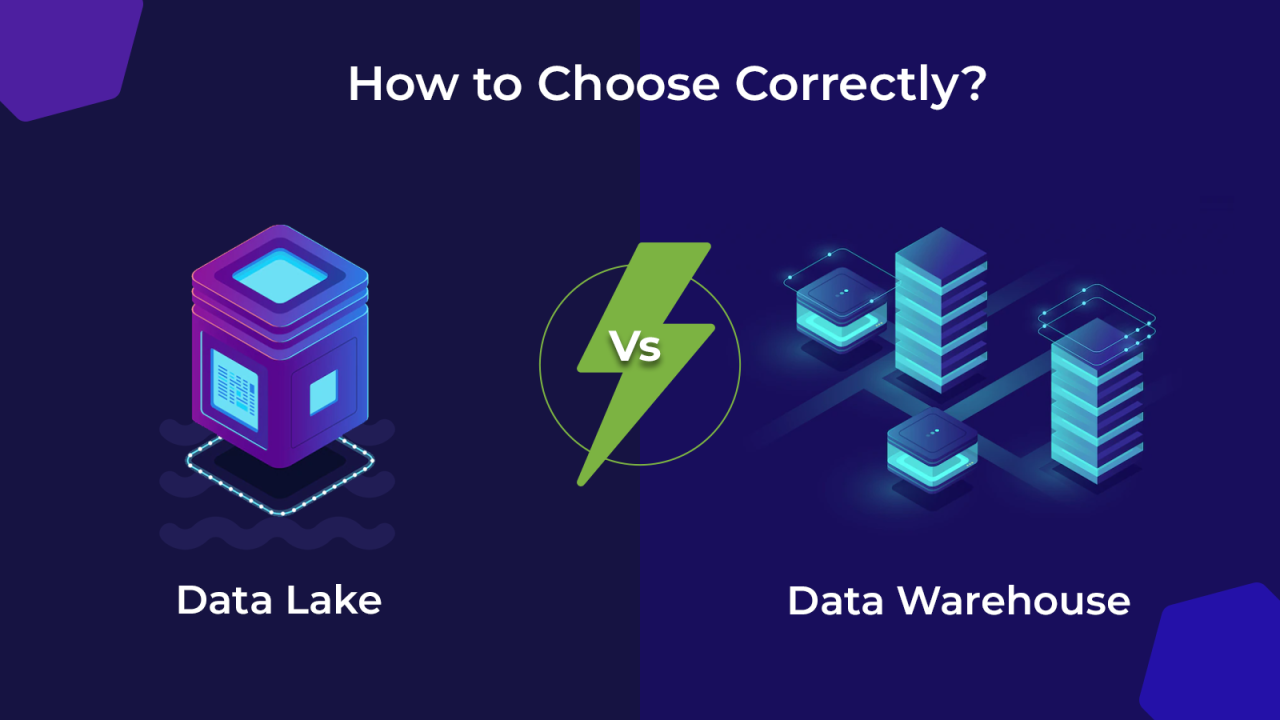In an increasingly connected world, where data is generated at an unprecedented scale, the traditional model of sending all information to distant centralized data centers for processing is becoming unsustainable. This is where Edge Computing emerges as a transformative paradigm, fundamentally revolutionizing how data is handled. By bringing computation and data storage closer to the sources of data generation—the ‘edge’ of the network—it enables near real-time processing, reduces latency, optimizes bandwidth, and enhances security for a vast array of applications. This isn’t merely an architectural shift; it’s a profound re-imagining of data flow, empowering immediate insights, enhancing local autonomy, and unlocking new capabilities for industries and smart environments globally. Edge computing is indeed revolutionizing how we interact with and extract value from data.
The Data Deluge and Centralized Computing’s Bottlenecks
To fully appreciate the urgency and necessity of edge computing, it’s crucial to understand the challenges posed by the exponential growth of data and the limitations of traditional centralized cloud or data center models.
A. The Explosion of Data at the Periphery
The sheer volume and velocity of data being generated today are staggering, largely due to the proliferation of connected devices.
- Internet of Things (IoT) Proliferation: Billions of IoT devices—sensors in smart homes, industrial machinery, connected vehicles, smart city infrastructure, wearables—are constantly collecting and transmitting data. This creates a massive, continuous stream of information generated at the ‘edge.’
- High-Bandwidth Applications: Applications like real-time video surveillance, augmented reality (AR), virtual reality (VR), and autonomous vehicles generate colossal amounts of high-fidelity data that require immediate processing and low latency.
- User Expectations: Consumers and businesses alike expect instantaneous responses from their applications. Delays of even a few milliseconds can lead to frustration, lost productivity, or critical safety issues.
- Growth of AI at the Edge: As AI models become more sophisticated, there’s a growing demand to run AI inference directly on devices or local gateways to enable real-time decision-making without constant cloud connectivity.
B. Limitations of Centralized Cloud Computing for Edge Data
While cloud computing offers immense scalability and flexibility, relying solely on it for all data processing from the edge presents significant bottlenecks for specific types of workloads.
- Network Latency: Sending all raw data from edge devices to a centralized cloud for processing and then sending instructions back introduces inherent delays. For time-critical applications (e.g., autonomous driving, industrial control), even small latencies are unacceptable and can be dangerous.
- Bandwidth Costs and Saturation: The sheer volume of raw data generated at the edge can quickly overwhelm network bandwidth, leading to expensive data transfer costs and network congestion. Transmitting gigabytes of video per second from a factory floor to the cloud is often impractical and economically unfeasible.
- Security and Privacy Concerns: Sending sensitive data (e.g., medical records, industrial secrets, personal location data) over public networks to distant data centers raises significant security and privacy concerns. Local processing can keep sensitive data within controlled environments.
- Offline Operations: Many edge devices need to function reliably even when internet connectivity is intermittent or unavailable. A purely cloud-dependent model cannot support this, making it unsuitable for remote industrial sites or disaster-prone areas.
- Regulatory Compliance: Some industries or countries have data residency requirements, mandating that certain types of data remain within specific geographical boundaries. Centralized cloud processing can violate these regulations.
These challenges highlight a fundamental shift needed in how data is processed, pushing intelligence closer to the source of action.
Core Principles and Architecture of Edge Computing
Edge computing is not a single technology but an architectural philosophy built upon several key principles and components that enable decentralized data processing.
A. Proximity to Data Source
The defining characteristic of edge computing is its emphasis on proximity. Computation and data storage occur as close as possible to where the data is generated, rather than being sent all the way to a distant centralized cloud or data center.
- Reduced Latency: Processing data locally drastically cuts down the time it takes for data to travel to a server and for instructions to return, enabling near real-time decision-making for time-sensitive applications.
- Optimized Bandwidth: Instead of sending all raw data to the cloud, only pre-processed, filtered, or aggregated data (insights) needs to be transmitted. This significantly reduces bandwidth consumption and associated costs.
- Enhanced Reliability: Local processing means operations can continue even if the connection to the central cloud is intermittent or lost, improving system resilience for mission-critical applications.
B. Distributed and Decentralized Infrastructure
Edge computing embraces a distributed and decentralized infrastructure model, contrasting with the centralized model of traditional cloud computing.
- Edge Nodes/Devices: These are the smallest units at the very edge, typically IoT devices (sensors, cameras, smart appliances, industrial controllers) that generate data. They may have limited processing capabilities.
- Edge Gateways: These are local computing devices (e.g., industrial PCs, specialized servers) that aggregate data from multiple edge devices, perform initial processing, filtering, and analysis, and can run local applications or AI models. They act as a bridge to the central cloud.
- Local Data Centers/Micro Data Centers: In some cases, edge infrastructure can involve small, localized data centers situated closer to users or specific facilities (e.g., a factory floor, a retail store, a remote oil rig). These provide more significant compute and storage capabilities than individual gateways.
- Cloud Integration: While processing at the edge, edge computing is not a replacement for the cloud. It’s a complement. The central cloud remains essential for long-term data storage, complex big data analytics, global AI model training, and overarching management of edge deployments.
C. Intelligent Data Management
Effective edge computing relies on intelligent strategies for managing data flow and processing.
- Data Filtering and Aggregation: Only relevant data is processed at the edge, and only necessary insights are sent to the cloud. Raw, noisy, or redundant data is discarded or aggregated locally.
- Real-time Analytics: Edge devices or gateways perform immediate analysis of streaming data to enable instant actions or alerts.
- Edge AI/ML Inference: Pre-trained AI models can be deployed to the edge for local inference, allowing for real-time decision-making without cloud dependency (e.g., object detection on a security camera, predictive maintenance on a machine).
- Data Synchronization: Mechanisms are in place to synchronize processed data or insights from the edge back to the central cloud for long-term storage, broader analytics, and re-training of AI models.
D. Security and Privacy at the Edge
Bringing computation closer to the source introduces new security considerations, making robust security a core design principle.
- Data Minimization: Processing data locally allows sensitive information to remain on-site, reducing the need to transmit it over networks, thereby enhancing privacy.
- Secure Edge Devices: Implementing robust security measures on edge devices themselves, including secure boot, encryption, and secure authentication.
- Network Segmentation: Isolating edge networks from broader enterprise networks to limit the impact of potential breaches.
- Zero Trust Principles: Applying zero-trust security models where every interaction, even within the edge network, is authenticated and authorized.
- Compliance: Edge deployments must adhere to data residency laws and industry-specific regulations, which can be facilitated by local processing.
Transformative Advantages of Edge Computing
The strategic implementation of edge computing unlocks a multitude of profound benefits that directly address the limitations of centralized cloud models for specific, critical applications.
A. Ultra-Low Latency and Real-time Processing
This is arguably the most significant advantage of edge computing. By processing data at or near the source, it drastically reduces the time it takes for data to travel, be processed, and for an action to be initiated.
- Instantaneous Decision-Making: Critical for applications where milliseconds matter, such as autonomous vehicles (avoiding collisions), industrial automation (controlling machinery, preventing accidents), and real-time patient monitoring in healthcare.
- Enhanced User Experience: For interactive applications like augmented reality (AR) or online gaming, low latency provides a smooth, immersive, and responsive experience, eliminating lag and enhancing engagement.
- Faster Response to Events: In smart city applications, edge processing can detect and respond to incidents (e.g., traffic jams, security breaches) almost immediately, enabling quicker interventions.
B. Significant Bandwidth Optimization and Cost Savings
Edge computing fundamentally changes the economics of data transmission.
- Reduced Data Transmission: Instead of sending massive volumes of raw data to the cloud, edge devices perform local filtering, aggregation, and analysis. Only relevant insights or critical alerts are sent upstream. This dramatically cuts down on bandwidth usage.
- Lower Network Costs: Less data transmitted means lower data transfer costs, particularly significant for high-volume data generators like video surveillance systems or industrial sensors.
- Alleviating Network Congestion: By processing data locally, edge computing reduces the burden on core network infrastructure, preventing congestion and ensuring smoother operation for all connected systems.
C. Enhanced Data Security and Privacy
Processing data at the edge provides inherent advantages for security and privacy, especially for sensitive information.
- Data Localization: Critical or sensitive data can be processed and stored locally, within a controlled environment, preventing its transmission over public internet infrastructure where it might be intercepted or compromised. This also helps meet data residency requirements.
- Reduced Exposure: Minimizing the amount of raw data sent to the cloud reduces the ‘attack surface’ for cyber threats, as less data traverses potentially vulnerable public networks.
- Compliance Adherence: For industries with strict regulatory compliance (e.g., healthcare, finance, defense) that mandate data remain within specific geographical or organizational boundaries, edge computing offers a viable solution.
D. Improved Operational Resilience and Reliability
Edge computing strengthens the robustness of distributed systems, allowing operations to continue even under challenging network conditions.
- Offline Capability: Edge devices and gateways can continue to operate and process data even if internet connectivity to the central cloud is intermittent or entirely lost. This is crucial for remote industrial sites, critical infrastructure, and mobile assets.
- Distributed Redundancy: By distributing processing capabilities, the failure of a single cloud region or a network outage does not cripple the entire operation, as local functions can still proceed.
- Faster Recovery: In disaster scenarios, localized processing and data storage can facilitate quicker recovery and restoration of services compared to entirely cloud-dependent systems.
E. Unlocking New Business Models and Innovations
Edge computing is not just about optimization; it’s about enabling entirely new applications and business opportunities that were previously impossible due to latency or bandwidth constraints.
- Autonomous Systems: It’s foundational for self-driving cars, autonomous drones, and smart robots that require real-time perception and decision-making capabilities without constant reliance on cloud connectivity.
- Smart City Applications: Enables real-time traffic management, intelligent public safety systems, dynamic waste management, and optimized energy distribution by processing data locally.
- Personalized and Context-Aware Experiences: For retail or hospitality, edge computing allows for highly personalized customer experiences based on real-time behavior analysis at the point of interaction.
- Predictive Maintenance and Industry 4.0: In manufacturing, edge intelligence enables real-time monitoring of machinery, predictive maintenance, and optimized production lines by processing sensor data on the factory floor, driving the vision of Industry 4.0.
Key Industries and Promising Use Cases for Edge Computing
Edge computing is a cross-cutting technology with transformative potential across a wide range of sectors, each leveraging its unique capabilities for distinct benefits.
A. Manufacturing and Industrial Automation (Industry 4.0)
This sector is a prime beneficiary, driving the vision of smart factories and intelligent operations.
- Predictive Maintenance: Sensors on machinery generate vibration, temperature, and acoustic data. Edge devices analyze this data in real-time to predict equipment failure before it occurs, enabling just-in-time maintenance and minimizing costly downtime.
- Quality Control: High-speed cameras and computer vision models at the edge perform real-time defect detection on production lines, identifying flaws immediately and improving product quality without sending massive video streams to the cloud.
- Process Optimization: Edge analytics optimize machine parameters, robotic movements, and material flow on the factory floor in real-time, improving throughput and reducing energy consumption.
- Worker Safety: Edge-enabled sensors and cameras can monitor worker safety, detect hazards (e.g., unauthorized access to dangerous zones), and trigger immediate alerts or machine shutdowns.
B. Autonomous Vehicles and Transportation
Edge computing is absolutely critical for the safety and functionality of self-driving cars and smart transportation systems.
- Real-time Decision Making: Autonomous vehicles process vast amounts of sensor data (LiDAR, radar, cameras) at the edge to make instantaneous decisions about navigation, obstacle avoidance, and pedestrian detection, where even milliseconds of latency from the cloud would be fatal.
- Vehicle-to-Everything (V2X) Communication: Edge nodes facilitate direct communication between vehicles, infrastructure (V2I), and pedestrians (V2P) for real-time traffic management, collision avoidance, and smart parking.
- Traffic Management: Edge sensors and analytics in smart intersections can dynamically adjust traffic light timings to reduce congestion and improve flow in real-time, without relying on central cloud commands.
C. Smart Cities and Public Safety
Edge computing forms the intelligent backbone for urban environments, enhancing services and security.
- Smart Lighting and Energy Management: Streetlights with edge sensors can adjust brightness based on real-time traffic, pedestrian presence, and ambient light, optimizing energy consumption.
- Public Safety and Surveillance: Edge-enabled cameras can perform real-time facial recognition (with privacy considerations), object detection, and anomaly detection to alert authorities to suspicious activities or emergencies without continuous streaming to the cloud.
- Waste Management: Smart bins with edge sensors can detect fill levels and optimize collection routes, leading to more efficient waste management.
- Environmental Monitoring: Edge sensors monitor air quality, noise levels, and water quality, providing real-time data for environmental protection and public health.
D. Healthcare and Remote Patient Monitoring
Edge computing enables personalized and immediate healthcare solutions, particularly in remote settings.
- Remote Patient Monitoring: Wearable devices and home sensors collect vital signs. Edge gateways analyze this data locally, immediately alerting caregivers or patients to critical changes, reducing the need for constant cloud connectivity and ensuring privacy.
- Medical Imaging Analysis: Edge AI can perform initial analysis of medical images (e.g., X-rays, MRIs) at clinics or hospitals, providing rapid preliminary diagnoses or highlighting areas for a specialist’s review, accelerating care.
- Smart Hospitals: Optimizing hospital operations through real-time tracking of equipment, patient flow, and staff location, enhancing efficiency and patient care.
E. Retail and Smart Stores
Edge computing transforms the in-store experience and optimizes retail operations.
- Personalized Shopping Experiences: Edge analytics can analyze customer movement, purchase history, and real-time preferences to deliver personalized promotions or product recommendations directly to customers’ devices in-store.
- Inventory Management: Smart shelves with edge sensors can track inventory levels in real-time, trigger reorders, and identify misplaced items, reducing stockouts and improving efficiency.
- Loss Prevention: Edge-enabled cameras with AI can detect shoplifting attempts or unusual behavior in real-time, alerting staff immediately.
- Frictionless Checkout: Technologies like Amazon Go utilize edge computer vision and sensor fusion to enable “just walk out” shopping experiences, eliminating traditional checkout lines.
Implementing Edge Computing Solutions: A Strategic Roadmap
Deploying effective edge computing solutions requires a strategic approach, considering the specific use case, technical complexities, and organizational readiness.
A. Define Clear Use Cases and Value Proposition
Before investing in edge computing, clearly define the specific business problems you aim to solve that cannot be effectively addressed by cloud-only solutions. Focus on use cases where low latency, bandwidth optimization, offline capability, or enhanced security/privacy are critical requirements. Identify the measurable value proposition (e.g., “reduce unplanned downtime by X%”, “improve safety by Y%”, “reduce data transfer costs by Z%”). Starting with a clear, high-impact use case is crucial for demonstrating ROI.
B. Assess Edge Environment and Connectivity
Thoroughly assess the physical environment where edge devices will be deployed. Consider:
- Environmental Factors: Temperature, humidity, dust, vibrations (for industrial settings).
- Power Availability: Reliable power sources, backup power needs.
- Network Connectivity: Reliability of internet connection (cellular, Wi-Fi, wired), available bandwidth, and latency requirements.
- Security Considerations: Physical security of edge devices, network segmentation needs. This assessment will inform the choice of edge hardware and deployment strategy.
C. Select Appropriate Edge Hardware and Software Stack
The choice of edge hardware ranges from small IoT devices to powerful industrial PCs or micro data centers. Select hardware that matches the required processing power, storage, and environmental resilience.
- Edge Devices: Sensors, actuators, cameras.
- Edge Gateways: Devices that aggregate data and perform local processing (e.g., NVIDIA Jetson, Intel NUC, industrial IoT gateways).
- Edge Servers/Micro Data Centers: For heavier compute and storage needs.
- Edge Software Stack: Choose an operating system (e.g., Linux distributions optimized for edge), container runtimes (e.g., Docker, containerd), and orchestration tools (e.g., Kubernetes variants like K3s, OpenShift Edge) designed for distributed environments. Consider cloud provider edge services (e.g., AWS IoT Greengrass, Azure IoT Edge, Google Cloud Anthos).
D. Design for Data Flow and Synchronization
Develop a robust strategy for data flow and synchronization between the edge and the cloud.
- Data Filtering and Aggregation Logic: Define what data needs to be processed at the edge, what needs to be summarized, and what (if anything) needs to be sent to the cloud.
- Data Models: Standardize data models across edge devices and cloud analytics platforms.
- Communication Protocols: Choose efficient and secure protocols for edge-to-cloud and edge-to-edge communication (e.g., MQTT, HTTPS, gRPC).
- Synchronization Mechanisms: Implement reliable mechanisms for data synchronization, including handling intermittent connectivity, conflict resolution, and ensuring data consistency between edge and cloud.
E. Prioritize Security and Governance
Given the distributed nature of edge deployments, security and governance are paramount and must be designed in from the ground up.
- Device Security: Secure boot, hardware-level encryption, regular patching, and tamper detection for edge devices.
- Network Security: Isolate edge networks, implement firewalls, intrusion detection systems, and apply zero-trust principles.
- Data Encryption: Encrypt data at rest on edge devices and in transit between edge and cloud.
- Identity and Access Management (IAM): Implement granular IAM policies for all users, devices, and applications accessing edge resources.
- Regulatory Compliance: Ensure all edge solutions adhere to relevant data residency, privacy (e.g., GDPR), and industry-specific regulations.
F. Implement Centralized Management and Orchestration
While processing is distributed, centralized management and orchestration are crucial for scaling and maintaining edge deployments.
- Remote Device Management: Tools to remotely monitor, update, and troubleshoot edge devices and applications.
- Software Deployment and Updates: Automated CI/CD pipelines to deploy and update applications to edge nodes from the central cloud.
- Policy Management: Centrally define and enforce security, configuration, and operational policies across all edge locations.
- Observability: Implement robust logging, monitoring, and tracing to gain real-time visibility into the health and performance of distributed edge deployments.
G. Foster Cross-Functional Collaboration and Skill Development
Edge computing projects inherently require collaboration between IT (networking, cloud), operations (OT for industrial settings), and security teams. Invest in upskilling your workforce in areas like IoT, distributed systems, edge infrastructure management, and specialized AI/ML at the edge. This interdisciplinary approach is vital for successful implementation and ongoing management.
H. Plan for Scalability and Future Growth
Design your edge architecture to be scalable and adaptable to future needs. Consider how to onboard new edge devices, expand processing capabilities, and integrate new applications as your organization’s requirements evolve. Embrace modularity and use Infrastructure as Code (IaC) to manage edge deployments programmatically.
The Future Trajectory of Edge Computing
Edge computing is poised for massive expansion and deeper integration across various sectors. Several key trends will define its future trajectory.
A. Hyper-Automation and Autonomous Edge Systems
The future will see edge computing enabling increasingly hyper-automated and truly autonomous systems.
- Self-Optimizing Edge: Edge nodes will not only process data but also dynamically optimize their own operations, power consumption, and network usage based on real-time conditions.
- Swarm Intelligence at the Edge: Multiple edge devices or robots will coordinate and collaborate autonomously to achieve complex tasks, with intelligence distributed across the local network rather than relying solely on a central brain.
- Robotics and Drones: Edge computing will be fundamental for advanced robotics, drones, and autonomous vehicles to make split-second decisions and navigate complex, unpredictable environments independently.
B. Greater Integration of AI/ML at the Edge
The deployment of AI and Machine Learning models directly at the edge will become pervasive.
- TinyML: Development of highly optimized, extremely small ML models that can run on resource-constrained microcontrollers and edge devices, enabling AI in almost any device.
- Federated Learning: AI models will be trained collaboratively across multiple edge devices, where data stays local, and only model updates are shared with a central server, enhancing privacy and reducing data transfer.
- Edge AI as a Service: Cloud providers will offer more sophisticated services for easily deploying, managing, and updating AI models across vast numbers of edge locations.
C. Beyond Connectivity: The Distributed Computing Fabric
Edge computing will evolve beyond just data processing to become a seamless distributed computing fabric spanning from edge to cloud.
- Serverless at the Edge: Serverless functions will increasingly run directly on edge devices and gateways, abstracting away underlying infrastructure management even at the far edge.
- Containerization at the Edge: Lightweight container runtimes and orchestration (e.g., K3s for Kubernetes at the edge) will make it easier to deploy and manage applications consistently across diverse edge environments.
- Digital Twins at the Edge: Real-time data processing at the edge will power localized digital twins, allowing for hyper-accurate, real-time virtual replicas of physical assets directly where they operate.
D. Enhanced Security and Trust Frameworks at the Edge
Given the critical nature of edge applications, security will continue to be a paramount focus.
- Hardware-Level Security: Increased reliance on secure enclaves, Trusted Platform Modules (TPMs), and hardware-rooted trust for edge devices.
- Blockchain for Edge Security: Blockchain could be used for tamper-proof logging of edge data, secure device identity management, and ensuring the integrity of data provenance.
- Automated Threat Detection and Response: AI-powered security at the edge will detect and respond to threats in real-time, even when disconnected from central security operations centers.
E. Sustainable Edge Computing
The environmental impact of digital infrastructure will lead to a focus on sustainable edge computing.
- Energy-Efficient Edge Hardware: Design and development of ultra-low power consumption chips and devices for edge deployments.
- Renewable Energy Sources: Powering edge data centers and remote gateways with localized renewable energy (e.g., solar, wind).
- Optimized Data Flows: Further reducing unnecessary data transmission to minimize energy consumption in data centers and networks.
F. Industry-Specific Edge Solutions
The trend will move towards highly specialized, industry-specific edge solutions tailored for unique vertical markets.
- Healthcare Edge: Specialized edge devices for operating rooms, remote diagnostics, and patient monitoring.
- Agriculture Edge: Ruggedized edge devices for smart farming, irrigation control, and crop monitoring in harsh outdoor environments.
- Energy Grid Edge: Intelligent edge systems for smart grids, renewable energy integration, and demand response management.
Conclusion
Edge computing is not merely an incremental technological advancement; it is a fundamental architectural revolution that is profoundly revolutionizing data processing and unlocking unprecedented capabilities across industries. By shifting computation and storage closer to the source of data generation, it directly addresses the critical limitations of centralized cloud models—namely, latency, bandwidth, and security concerns—for time-sensitive, high-volume, and privacy-critical applications. This paradigm empowers immediate insights, enhances local autonomy, and ensures operational resilience, even in disconnected environments.
The transformative advantages, ranging from ultra-low latency and significant bandwidth optimization to enhanced security and the enablement of entirely new business models (such as autonomous vehicles and smart factories), underscore its critical importance. While navigating the challenges of initial investment, technical integration, and managing a distributed infrastructure, the future trajectory of edge computing is clear. It promises ubiquitous AI/ML at the edge, hyper-automated autonomous systems, seamless integration into a pervasive distributed computing fabric, and a conscious drive towards sustainable and secure deployments. As data continues to explode at the periphery, edge computing stands as the essential architectural blueprint, directly shaping how we interact with, extract value from, and ultimately control the vast, real-time streams of information that define our connected world. It’s truly transforming data from mere bytes into immediate, actionable intelligence, right where it’s needed most.














